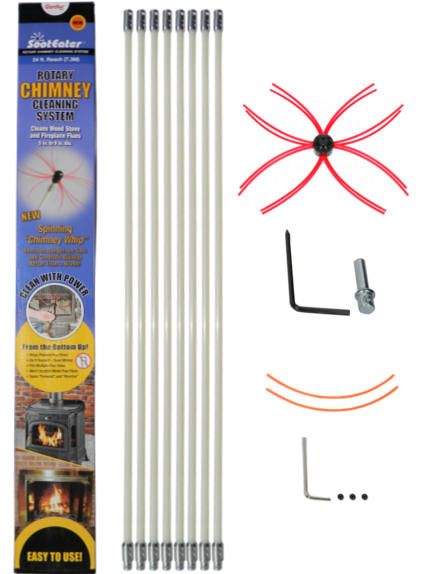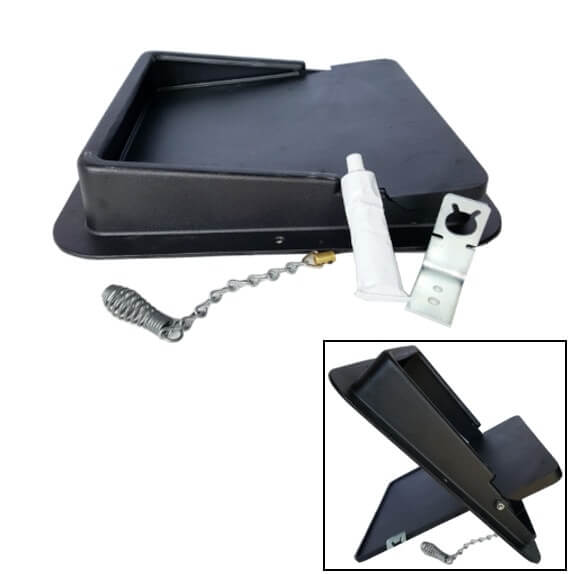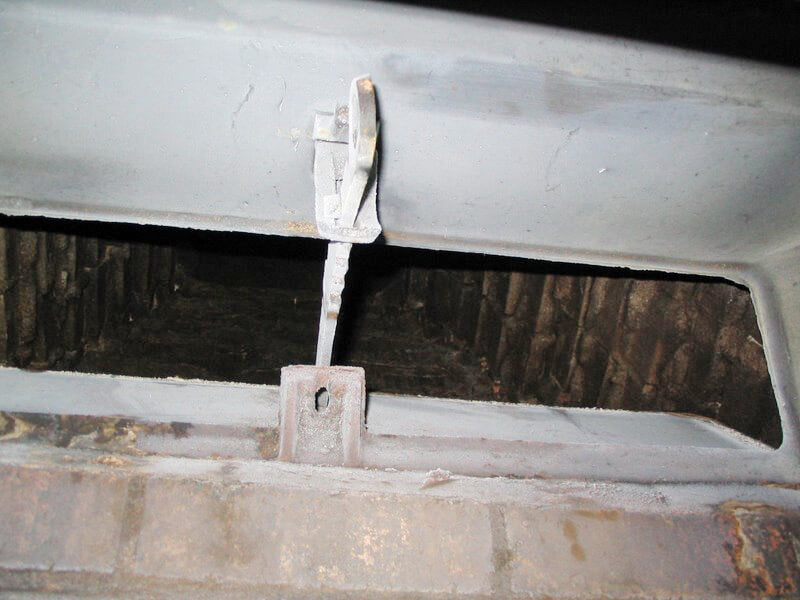Fireplace Dampers | Put a Top Damper on the Top of Your To Do List
July 19, 2023

Is there a large hole in your living area that is directly connected to the outside? There is if you have a fireplace with a chimney.
The damper is an important part of your fireplace chimney. It does more than just control the amount of heat your fireplace sends into the room; it can also help prevent heated air loss through the chimney or down drafts when the chimney is not in use. An improperly sealing or broken damper could increase your heating and cooling costs significantly, and these days, it is important to conserve as much as possible.
So how can you control all that heat loss? In order to help reduce cost and energy loss in homes with fireplace chimneys, your chimney damper should work and

close properly. Most chimneys are designed with a throat damper made from cast iron, but these are not practical; the mating surfaces are rough, preventing them from sealing fully, and allowing cold air to leak. Fortunately, there is a second style of damper that you can install yourself, called a "Top Damper".
Unlike the traditional throat damper, a chimney top damper is installed at the top of the chimney. To operate the top damper, a cable is installed down the flue to the firebox. Pulling and latching the cable closes the damper lid onto the rubber gasket. A damper closed this way is practically air tight. Unlatching the cable allows the spring damper lid to open. Top dampers are recommended over throat dampers because they provide a tighter seal. As a bonus, they help keep bees from nesting in your chimney.


There are various styles and sizes of top dampers to fit most flues, and they are also available with or without screened caps. When the damper is closed, it will keep birds, animals, rain and debris from entering into the flue and house. With the addition of the screen and cap it will still keep these undesirables out even if the damper is left open after you finish burning.
Top dampers also are useful even when the fireplace is not in use, if you are using your furnace or air conditioner. By keeping the top damper closed you can keep heated or cooled air from drafting out of your home. Sealing a fireplace flue with a top damper can also reduce or eliminate those smelly soot odors that are prone to enter into the house during windy or humid days.
There are two safety concerns when using dampers. First, a wood-burning fire must be completely out and the ashes cold before the damper can be shut. Even a smoldering fire can still produce carbon monoxide gases, so do not close a fireplace damper until the fire is completely out.
The second one involves gas logs. If you are burning wood, you will have plenty of smoke to let you know that you forgot to open the damper. With a gas log fireplace, you have no such warning, and the danger is that the fireplace will continue to burn with the damper closed, allowing carbon monoxide to build up. For this reason, top dampers are not suitable for use with gas logs.
We do recommend you purchase a carbon monoxide detector. Every home with gas appliances should have a carbon monoxide detector, in case an appliance is faulty.
If you have any questions about top dampers, feel free to give us a call. We're happy to help!
DIY Center
(AKA ‘The Rockford Files’)
From video tutorials to product walkthroughs, we have a variety of DIY resources just for you! Click the button below to view our entire library.








